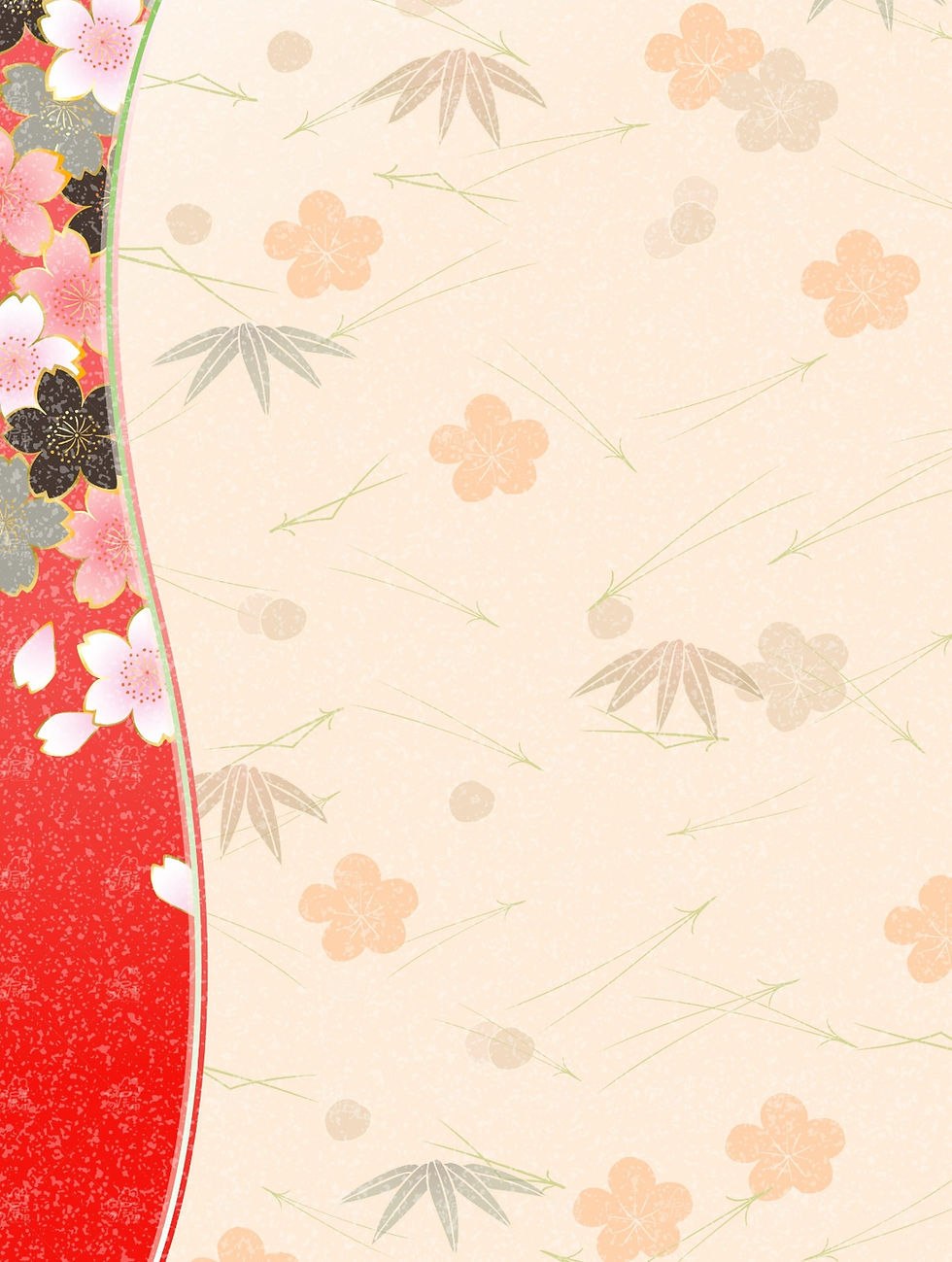
Costumes in Aoi no Ue
The costumes used in noh are called noh shōzoku. A good example is the karaori, an exquisitely embroidered, traditional woman’s kimono. Certainly one of the most beautiful theatrical costumes in the world. During the early stages of noh, around the time of Kannami and Zeami, the costumes were more modest, as they were using the their everyday clothes to perform in. However, as noh became favorable in the eyes of the aristocracy and military ruling classes, they began to receive more finely crafted kimono to perform and this gradually became the norm. Furthermore during the Azuchi Momoyama period (approx. 1558-1600), the flourishing of Japanese culture coupled with great advances in fine arts led to even higher standards for costumes. In this way, these costumes were truly works of art and quite separated from reality of the character. For example, historically, a poor fisherman or a woman who gathers sea-salt would not be adorned in such finery, but by using such stylized and symbolic costumes, noh is better able to express a characters feelings. Noh Costume Categories Shōzoku (noh costumes) can be divided into 7 different categories: Kahatsu (things for head, concerning hair) : kazura (wig), Kaburi-mono (things worn on the head): eboshi (hat), tengan (headdress), etc. Uwagi (various outer garments worn over kimono): nōshi (imperial robe), kariginu (hunting cloak), happi (festival coat), chōken (outer shawl), maiginu (dancing shawl), etc. Kitsuke (short sleeved kimono worn under outer kimono): surihaku, nuihaku, noshime, etc. Uwagi / Kitsuke (outer kimono): karaori (exquisite women’s kimono), atsuita (exquisite male kimono), etc. Hakama (Japanese pleated loose-fitting trousers): ōkuchi (large warrior hakama), hangiri (lit. half-cut hakama), sashinuki, nagabakama (lit. long hakama), etc. Other small items like sashes used for tying things on: kazura-obi, koshi-obi, koshi-himo, etc.



Noh Costume with Court Carriages, Cherry Blossoms, and Dandelions, around 1900, The Met Museum

Shite – Lady Rokujo’s Spirit
Lady Rokujo was once the consort of the Crown Prince during Emperor Kiritsubo’s reign. After her husband’s death, she fell in love with Hikaru Genji. However, as Genji’s affection faded and his legal wife Lady Aoi publicly humiliated her during the famous “carriage quarrel,” Rokujo’s heart became consumed by jealousy and grief. Torn between dignity and passion, she eventually transforms into a living spirit (ikiryō) who torments Lady Aoi. In the Noh play, her emotional turmoil is expressed through the Hannya mask, symbolizing both her anger and sorrow.
The shite wears a kazura (wig) and kazura-obi, symbolizing elegance and nobility. Her karaori (brocade kimono) and uroko-haku (scale-pattern underrobe) use deep red or gold to express jealousy and anguish. The hiramotoyui ties her hair, while the fan acts as her expressive instrument of emotion.




Nochi-shite – The Vengeful Spirit
Lady Aoi, the lawful wife of Genji, lies ill and tormented by unseen forces. Her suffering reveals the invisible yet destructive power of jealousy in human relationships. In the play, she remains unseen or represented symbolically onstage, emphasizing spiritual rather than physical conflict.
After a costume change (monogi), the shite reappears in a darker outfit, wielding an uchi-bō (striking stick). This marks the transformation from internal suffering to unleashed rage.
Emotion: Jealousy transformed into fury.




Tsure – Companion of the Shite

A shrine maiden who performs a spirit-summoning ritual using an azusayumi (catalpa bow) to identify the source of Aoi’s affliction. She communicates with Rokujo’s spirit through kuchiyose (spirit-calling). Although not found in The Tale of Genji, this role was inspired by medieval traditions of female shamans who worked alongside monks to exorcise spirits.
The tsure wears a mizugoromo over white layers, paired with karaori and surihaku patterns. Her rosary (nenju) symbolizes restraint and spiritual calm—a counterbalance to the shite’s emotional turbulence.
Emotion: Calm amidst chaos.


Waki – The Priest
A mountain priest (yamabushi) from Mount Hiei, he represents Buddhist power and discipline. In the second half of the play, he confronts the vengeful spirit of Rokujo and, through his prayers, soothes her rage. This character does not appear in the original novel but reflects medieval exorcism practices.

The waki dons tokin (black cap) and suzukake (travel attire) with gray ōkuchi trousers and a small sword. His subdued tones represent purification and the authority of exorcism.
Role: The exorcist who confronts the unseen.

能「葵上」ワキ横川小聖





Waki-tsure – Priest’s Companion
The courtiers serve under Prince Suzaku and help summon the monk for exorcism. Their practical actions move the story forward, while their restrained manner contrasts with the emotional turmoil of the main characters.
Wearing hora-eboshi and awase-kariginu, the waki-tsure reflects spiritual support and discipline. His plain costume emphasizes harmony and humility.
Emotion: Quiet devotion.


Ai – The Commoner (Interlude Role)
Wearing hora-eboshi and awase-kariginu, the waki-tsure reflects spiritual support and discipline. His plain costume emphasizes harmony and humility.
Emotion: Quiet devotion.
This character is a servant in the household of Lady Aoi’s father, the Left Minister. Following the courtier’s order, he travels to summon the monk Yokawa no Shōjō to perform the exorcism. Played by a Kyōgen actor, this role represents ordinary townspeople who serve as practical agents between the noble world and the religious one. His simple, realistic gestures and speech contrast with the stylized, poetic performance of the Noh actors. Function: A link between the everyday world and the spiritual ritual.





